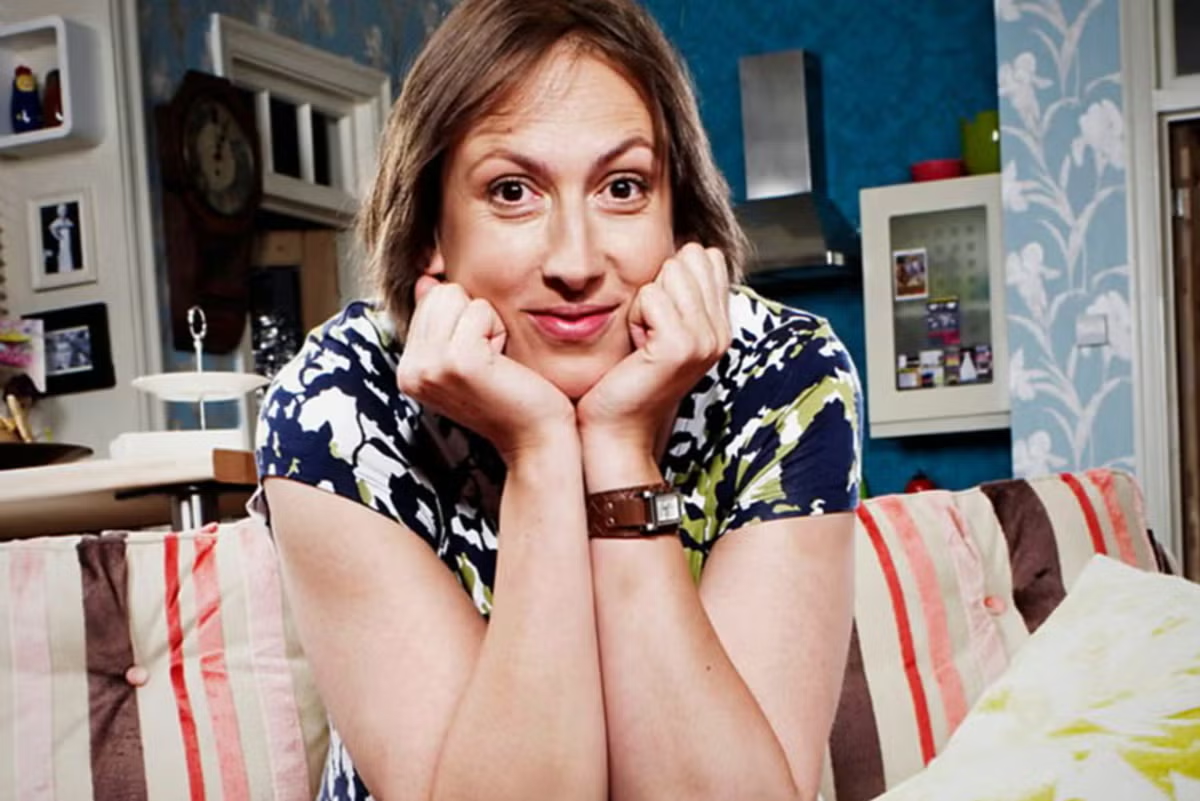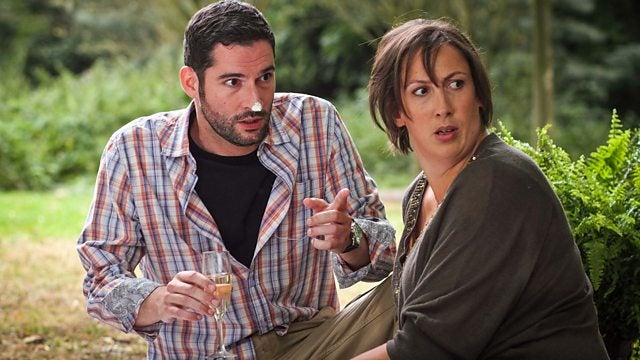
Your support helps us to tell the story
This election is still a dead heat, according to most polls. In a fight with such wafer-thin margins, we need reporters on the ground talking to the people Trump and Harris are courting. Your support allows us to keep sending journalists to the story.
The Independent is trusted by 27 million Americans from across the entire political spectrum every month. Unlike many other quality news outlets, we choose not to lock you out of our reporting and analysis with paywalls. But quality journalism must still be paid for.
Help us keep bring these critical stories to light. Your support makes all the difference.
For five years from 2009, Miranda Hart gave her name to a sitcom about a gangly singleton that reached audiences touching 10 million. Its fans were so tickled by her confident use of old-school slapstick and user-friendly catchphrases (such fun!) that it was promoted from Radio 4 to BBC Two to BBC One. On the back of its phenomenal popularity, in 2014 Hart sold out the O2 Arena with her My, What I Call Live Show. She had arrived in the entertainment stratosphere and the world was at her feet. Yet the final words in Miranda now look prophetic: “Dearest chums, I don’t know when or if we’ll ever see each other again…”
Across most of the past decade, you can count Hart’s appearances on the fingers of one hand. She played Miss Hannigan in a West End revival of Annie in 2017. That year most of her cast gathered as pop-up entertainers in the Royal Variety Performance, and two years later all reconvened to celebrate the show’s 10th anniversary at the London Palladium. In 2020, she was perfect casting as Miss Bates, the prattling spinster in Jane Austen’s Emma. Then came Covid.
But mostly, a comic actor credited with almost singlehandedly reviving the sitcom genre seemed to have withdrawn from the public eye. Where on earth did she go and where has she been?
The answer is a bombshell that comes in a moving new book. Its title – I Haven’t Been Entirely Honest with You – promises careful revelation. Then you get to the first paragraph: “When I collapsed, I needed answers for what to do right there and then. It was a chronic situation, but it was still a crisis. I couldn’t make myself a kale smoothie, or get to a yoga class, and I had no inclination to journal a gratitude list. I was ill and I was alone and I was debilitated.”
Hart doesn’t give a date for this collapse, but she refers to halting work “pretty soon after my first role in a Hollywood movie”. Spy, starring Melissa McCarthy, was released in 2015, when she also left Call the Midwife after four series playing the bespectacled matron Chummy. Since then, Hart describes how almost every return to work has come after days, weeks, even months spent recuperating in bed. “I was so often judging whether my body was strong enough to go back, cross when it wasn’t,” she writes. “It was work that I’d pushed myself to keep going for, before I collapsed again and surrendered.”
She grew so immobilised that she was unable even to take her beloved dog Peggy – subject of a previous book published in 2016 – for proper walks. As you read on, it starts to feel miraculous that Hart ever had any career at all. She talks of a condition she labels TATT, or tired all the time, and carbon-dates the gathering lassitude, anxiety and seemingly random afflictions to her early teens. Medical consultations never gave her the answer she needed until, in 2020, she finally had a set of breakthrough blood tests that attributed her multiple symptoms to Lyme disease, probably contracted at 14 from a tick bite when, for her father’s work, the family lived in Virginia.
With a treatable diagnosis, there is a path back to health and, her fans will be hoping, comedy. Her absence has left a significant gap. No comedian, female or male, has been so taken to the nation’s bosom since Victoria Wood.
To me, as Wood’s authorised biographer, the parallel between the two women is very clear. Each of them had to live with the unique pressure of being the country’s most beloved entertainer while preserving a private identity. Like Wood’s stand-up, Hart’s sitcom both revealed and concealed. Her direct-to-camera speeches at the start of each episode of Miranda would confide in the viewer as if to a friend, and like Wood her comedy was ruthlessly confessional about body anxieties.

But there was plenty Hart chose not to show too. Is It Just Me?, her first book published in 2012, was a guide to surviving life’s embarrassments that was selective in its disclosures. Nor is the new book a showbiz memoir, but an inspirational study in self-help in which Hart passes on the tips that helped her emerge from psychological as much as physical doldrums.

Watch Apple TV+ free for 7 days
New subscribers only. £8.99/mo. after free trial. Plan auto-renews until cancelled

Watch Apple TV+ free for 7 days
New subscribers only. £8.99/mo. after free trial. Plan auto-renews until cancelled
“They’re very different people,” says Patricia Hodge, who starred in Wood’s cocktail party satire Staying In in 1989 and went on to play Miranda’s insensitive mother Penny. “Victoria was quite stentorian in her approach to her work, for all the right reasons. Miranda you have fun with. There is a lot of laughter as well as serious moments in the rehearsal room.”
Where Wood had Walters, and French and Saunders had each other, Miranda Hart had Sarah Hadland as little Stevie, the pocket blonde dynamo she treated like a rag doll. When I interviewed her in 2016, Hadland admitted that she initially doubted the comic potential of the show. “I remember when she said she wanted to push me off the stool, I was thinking, ‘What? Is this going to be funny?’ But she was incredibly clear about what she wanted to do. She made no bones about it. She wanted to make a traditional sitcom and was bucking the trend when everything was very observational, very small.”
Miranda, tall, clumsy and terminally single, both was and wasn’t Hart
By the time Miranda arrived, in 2009, the old-school sitcom was heading the way of a Python parrot. My Family was coming to the end of a long tenure. The critic-proof populist phenomenon that is Mrs Brown’s Boys was two years off. In her book, Hart talks of optimistically pitching “a ridiculous-sounding show to the BBC about a woman who runs a joke shop and looks to camera (when producers were advising me that was an unlikely sell)”. In fact, the tradition the show grew from just as much was American. It was in the US that – from Seinfeld to Ellen – comics played fictional versions of themselves.
Hodge hadn’t done a sitcom in years when she was asked to appear in Miranda Hart’s Joke Shop, the show’s first incarnation on Radio 4. “I didn’t know her – my limitation. We put it in front of an audience and I thought: There is something really magic about this woman. For the first and only time in my life, I dropped her a line and said, ‘Should you be doing it on TV, I’m here waiting in the wings.’” They soon discovered that both their mothers had a penchant for saying “what I call”. “She still calls me Mum Two and I call her Daughter.”
Hart peopled her sitcom with a female gang and one token male in the form of Gary, the love object and straight man played by Tom Ellis. Behind the camera she went further: her directors, producer, executive producer, floor manager were women. “I can’t imagine it would have worked as well any other way,” Hadland said.

Miranda, tall, clumsy and terminally single, both was and wasn’t Hart. The star writes of her delight when people tell her that her alter ego “freed them to accept who they are. I was writing a character who was trying to fit into the world, who didn’t yet have the confidence to express who she truly was. I had no idea that it would resonate on the scale it did.”
Hadland recalled being “shocked that teenage girls loved it. Stevie and Miranda are not cool. We’re 40-year-old women acting like kids. It turned out that they were desperate to see someone on TV that was as awkward as they felt.”
Miranda’s demographic fanned out from there. “That age group moved down and down and down,” says Hodge, “and within two or three years it was eight-year-olds who were jumping up and down with excitement. There is no question that she reinvigorated situation comedy.” It wasn’t just the pratfalls that sold it to the very young and old. It was also the complete absence of malice, the lack of swearing and only the occasional cameo of a chocolate penis.
It now emerges from I Haven’t BeenEntirely Honest with You that the woman who seemed to have such fun entertaining the nation was privately having none at all. But the book promises redemption. In the very first episode of Miranda, her mother is seen with a megaphone and a “Bridal Sale” placard asking anyone in the street if they’ll marry her daughter. In the final special, she gets her wish when, serenaded by Heather Small and Gary Barlow, Miranda and Gary finally tie the knot.
In the book, Hart describes always trusting that she would become a comedy actor. And she has a similar hunch about love: “I had this niggling sense of, I think I will marry at 51 and that will do me well.” After many years on her own, she coyly mentions a “boy”, soon revealed to be from Bristol. Though never saying his name, she explains how they met and dated until eventually, and on the very last page, we discover that Hart and Miranda share the same happy ending.
‘I Haven’t Been Entirely Honest with You’ was published on 10 October by Penguin Random House







